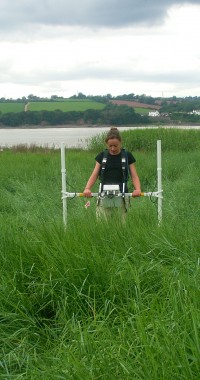Purton Hulks
 Time Travelling by Water spent the weekend in Purton, Gloucestershire. Here, where the bank of the Severn Estuary meets the Gloucester-Sharpness canal, are the hulks of around 80 boats that were deliberately beached to stop the bank eroding and the two water courses joining. The first vessels sailed up what was then a shingle bank in the early 1900’s and over the following 90 years around 70 further vessels were added. This was such an effective method of stabilising the bank that the site now consists of a broad strip of grassy land with the remains of over 30 of the hulks visible on the surface. The rest of the vessels now lie beneath the grass. This amazing collection represents over 100 years of maritime history and is an important site for learning about our seafaring past.
Time Travelling by Water spent the weekend in Purton, Gloucestershire. Here, where the bank of the Severn Estuary meets the Gloucester-Sharpness canal, are the hulks of around 80 boats that were deliberately beached to stop the bank eroding and the two water courses joining. The first vessels sailed up what was then a shingle bank in the early 1900’s and over the following 90 years around 70 further vessels were added. This was such an effective method of stabilising the bank that the site now consists of a broad strip of grassy land with the remains of over 30 of the hulks visible on the surface. The rest of the vessels now lie beneath the grass. This amazing collection represents over 100 years of maritime history and is an important site for learning about our seafaring past.
The aim of Friday’s activities was to conduct a geophysical feasibility survey over selected portions of the site in order to locate some of the buried vessels. This was done by surveying two areas in detail and scanning a larger area to the west of the site. The areas were identified for us by local historian Paul Barnett who has spent many years researching and generating interest in the hulks. The survey was a great success! Whilst the results of the scan survey are still being processed and examined, initial study of the results from the detailed survey show the traces of several vessels that now lie beneath the turf. These are shown on an earlier map of the site but our survey shows one vessel in particular that was reported to have drifted into the estuary is still in place. Now that we have demonstrated that this type of survey is effective on this site it is hoped that further work of this nature will be conducted in the future.
Time Travelling by Water chose this weekend to conduct the survey as our friends from the Nautical Archaeological Society (NAS) were also on site. The NAS were recording vessels with local volunteers in order to keep an accurate record of the location and condition of the hulks. This is important as the vessels are under threat, both from natural decomposition of the wood from which some of them are made, and from human actions such as vandalism and arson. The work of the NAS and their volunteers last weekend will help to show people in the future what the site was like in 2008. Younger visitors to the site took part in a scavenger hunt and did their own vessel recording in the form of ‘postcard to the future’. The children wrote their thoughts on the site and described some of the vessels as they are today on a blank postcard that will be kept by Paul Barnett with the site archive. This way, their postcards will remain alongside the work of some of the foremost researchers of the Purton Hulks and enable future generations to read what people think of this important site today.